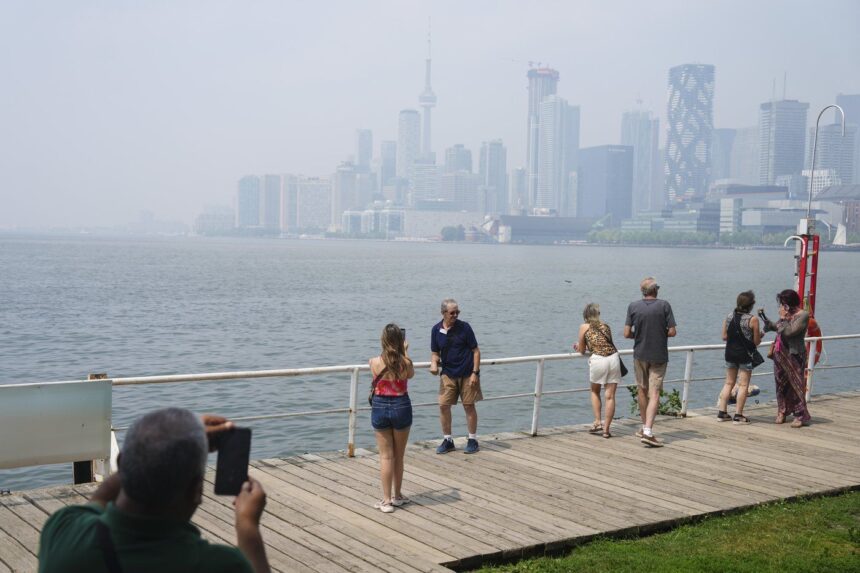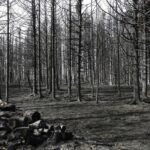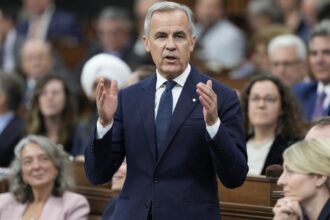The acrid smell of smoke hangs in the air across vast swaths of Canadian territory this week as an unprecedented combination of wildfire smoke and extreme heat creates dangerous conditions from coast to coast. In what meteorologists are calling a “compound climate disaster,” millions of Canadians find themselves either choking on hazardous air quality, sweltering under record-breaking temperatures, or enduring both simultaneously.
“We’re witnessing climate change impacts in real-time, and they’re intensifying faster than our models predicted,” says Dr. Elaine Chen, climate scientist at the University of British Columbia. “This isn’t just another bad summer—this is the new reality we must adapt to.”
In British Columbia, over 175 active wildfires have forced nearly 15,000 residents from their homes, with the province’s interior facing the worst conditions. The fires have generated massive smoke plumes that satellite imagery shows extending eastward across Alberta, Saskatchewan, and Manitoba, where Air Quality Health Index readings have remained at “very high risk” levels for eight consecutive days.
Meanwhile, southern Ontario and Quebec are experiencing their third major heatwave of the summer, with temperatures exceeding 38°C in Toronto yesterday and humidity making it feel closer to 45°C. Emergency departments across both provinces report a 60% increase in heat-related illnesses compared to historical averages.
“What makes this situation particularly dangerous is the combination effect,” explains Dr. Markus Singh, emergency physician at Toronto General Hospital. “When extreme heat and poor air quality overlap, the respiratory and cardiovascular systems face compounded stress. We’re seeing patients who might have tolerated one condition but are overwhelmed by both simultaneously.”
The economic impacts are mounting quickly. Agriculture Canada estimates crop losses could exceed $1.2 billion this season, while tourism-dependent communities report cancellation rates approaching 70% during what should be their peak revenue period. Power consumption for cooling has surged to all-time highs, straining electrical grids and triggering rolling brownouts in several municipalities.
Indigenous communities in northern regions face particularly severe challenges. In northern Manitoba, the Mathias Colomb Cree Nation has been completely evacuated for the third time in four years due to encroaching wildfires. Chief Katherine Sinclair expressed frustration at the cycle of displacement. “Our elders say the land has never behaved this way in living memory. This isn’t just about emergency response anymore—it’s about whether our traditional territories will remain habitable.”
Federal Environment Minister Sarah Williams announced emergency funding of $350 million yesterday to support firefighting efforts and evacuee assistance, acknowledging that climate change has fundamentally altered Canada’s relationship with summer. “What was once an occasional extreme event has become our new seasonal pattern,” Williams stated during a press conference in Ottawa. “Our infrastructure, healthcare systems, and emergency response capabilities all need significant upgrades to match this reality.”
Public health officials across affected regions urge vulnerable populations—including the elderly, pregnant women, and those with pre-existing respiratory or cardiac conditions—to remain indoors with air filtration when possible. Community cooling centers have been established in major urban areas, though attendance has been limited due to concerns about COVID-variant transmission in enclosed spaces.
As Canada navigates this challenging summer, questions emerge about long-term resilience and adaptation. Will our cities need architectural redesigns to withstand these new climate realities? How will agricultural practices evolve to maintain food security? And perhaps most critically, what political will exists to address the root causes of these intensifying climate patterns?
The answers remain unclear, but as Canadians peer through the haze toward uncertain skies, one thing becomes evident: our relationship with summer has fundamentally changed, and adaptation is no longer optional.

























